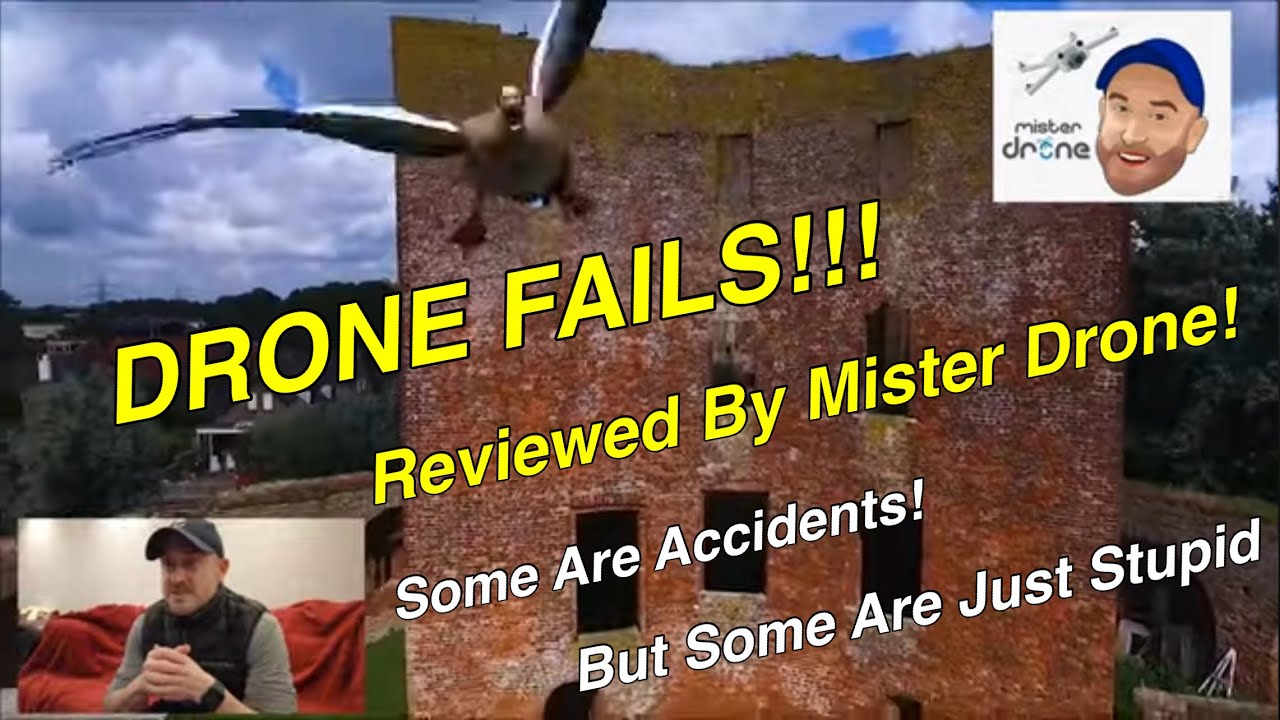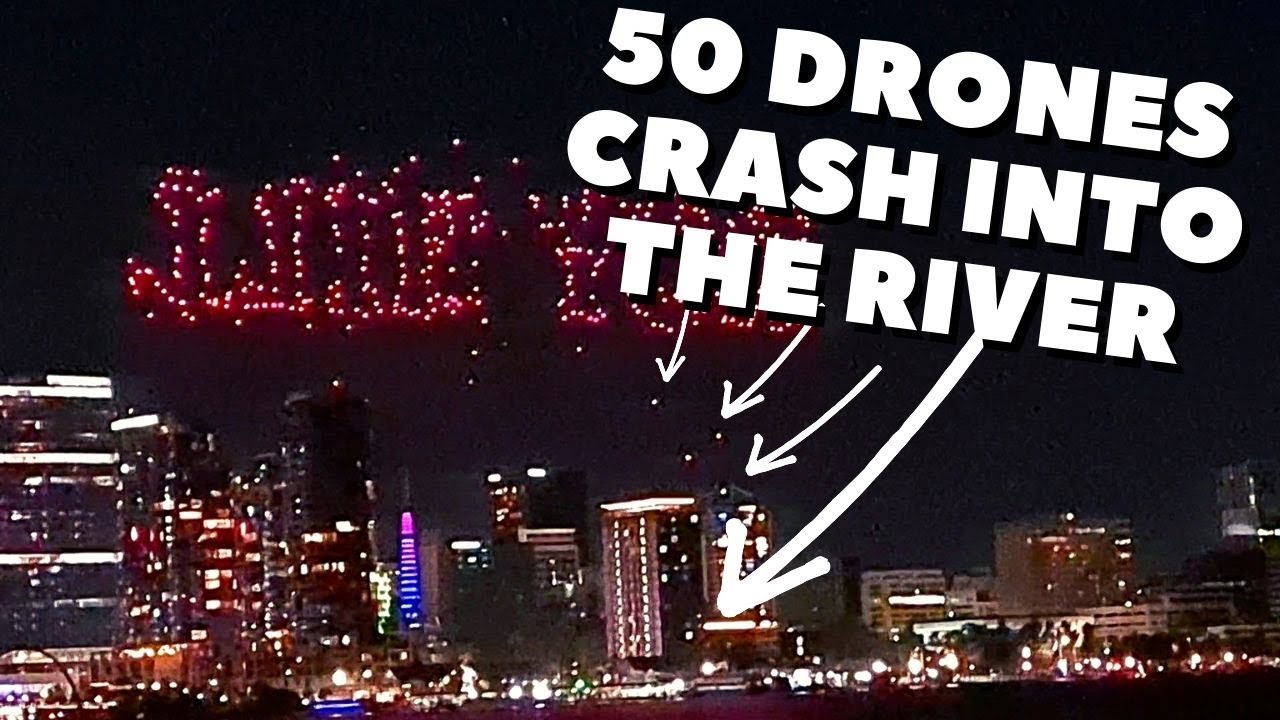Drone show crash: Imagine a breathtaking aerial spectacle suddenly turning disastrous. This isn’t just about malfunctioning technology; it’s a complex issue involving human error, regulatory oversight, and the ever-evolving technology itself. We’ll explore the various causes of these spectacular failures, from software glitches to environmental factors, and delve into the safety protocols and regulations designed – and sometimes failing – to prevent them.
Drone show crashes are unfortunately becoming more common, highlighting the need for better safety protocols. One incident that spurred increased scrutiny was a major drone crash in Paris , which raised concerns about the reliability of large-scale drone displays. This incident, and others like it, are pushing the industry to improve its technology and operational safety for future drone shows.
This guide will examine different types of drone show crashes, analyzing real-world examples and exploring the technological advancements aiming to improve safety. We’ll also discuss the significant financial, reputational, and legal consequences that can follow a drone show crash, highlighting crucial lessons learned from past incidents. Prepare for a deep dive into the world of drone shows, where the potential for awe-inspiring displays exists alongside the very real risk of catastrophic failure.
Drone Show Crash Analysis
Drone shows, while visually stunning, are complex operations susceptible to various failures. Understanding the types of crashes, implementing robust safety protocols, and leveraging technological advancements are crucial for minimizing risks and ensuring the safe execution of these spectacular displays. This article delves into the key aspects of drone show crashes, providing insights into their causes, consequences, and preventative measures.
Types of Drone Show Crashes
Drone show crashes can be categorized based on their root causes. These categories are not mutually exclusive, and incidents often involve multiple contributing factors.
- Software Malfunction: Glitches in the flight control software, communication protocols, or synchronization systems can lead to erratic drone behavior and crashes. For example, a bug in the software responsible for maintaining formation could cause a collision.
- Hardware Failure: Mechanical failures like motor malfunctions, GPS sensor errors, or battery issues can result in uncontrolled drone descent or loss of control. A sudden motor failure mid-flight could send a drone plummeting to the ground.
- Human Error: Pilot mistakes, inadequate training, or poor pre-flight checks are significant contributors to accidents. Incorrect calibration of the drone’s GPS, for instance, can lead to navigation errors.
- Environmental Factors: Adverse weather conditions such as strong winds, heavy rain, or interference from other electronic devices can negatively impact drone performance and cause crashes. A sudden gust of wind could knock a drone off course and result in a crash.
| Crash Type | Cause | Contributing Factors | Potential Prevention Methods |
|---|---|---|---|
| Software Malfunction | Software bug | Inadequate testing, outdated software | Rigorous software testing, regular updates, redundancy systems |
| Hardware Failure | Motor failure | Poor maintenance, use of substandard parts | Regular maintenance, use of high-quality components, redundancy systems |
| Human Error | Pilot error | Inadequate training, poor pre-flight checks | Comprehensive pilot training, detailed checklists, simulator training |
| Environmental Factors | Strong winds | Lack of weather monitoring, poor site selection | Thorough weather monitoring, site selection based on wind conditions, contingency plans |
Safety Protocols and Regulations
International regulations regarding drone operations vary. However, common themes include pilot certification, pre-flight inspections, and operational limitations. Let’s compare the regulations in three countries.
- United States: The Federal Aviation Administration (FAA) requires drone pilots to register their drones, obtain a Remote Pilot Certificate, and adhere to airspace restrictions. They also have specific regulations for commercial drone operations, including those involving drone shows.
- European Union: The EU has implemented the “U-space” initiative to manage drone traffic and safety. This involves various regulations on drone operations, including certification, airspace management, and safety protocols. Specific regulations vary among EU member states.
- China: China’s Civil Aviation Administration of China (CAAC) regulates drone operations, including licensing and operational procedures. Similar to the US and EU, they have strict regulations for commercial drone operations.
Pilot training and certification are paramount. Comprehensive training programs cover flight operations, emergency procedures, and safety regulations. Certified pilots possess the skills and knowledge to handle various scenarios and mitigate risks.
A pre-flight checklist is essential. This checklist should include:
- Drone inspection: Check for physical damage, battery levels, GPS signal strength, and proper functioning of all components.
- Software and firmware updates: Ensure the drone’s software is up-to-date and free of known bugs.
- Flight plan review: Verify the flight plan, taking into account wind conditions and potential hazards.
- Communication systems check: Confirm the reliable operation of communication links between the pilot and the drones.
- Emergency procedures review: Review emergency procedures and backup plans.
Technological Aspects Contributing to Crashes, Drone show crash

Technological issues frequently contribute to drone crashes. These include:
- GPS Interference: Signal jamming or interference from other sources can lead to inaccurate positioning and navigation errors.
- Communication Failures: Loss of communication between the pilot and the drones can result in uncontrolled flight.
- Battery Problems: Battery failure, low battery levels, or overheating can cause sudden power loss and crashes.
Advancements such as redundant systems, improved GPS technology, and enhanced communication protocols are improving safety. For example, the use of multiple GPS receivers on each drone increases reliability.
Technological solutions to enhance safety include:
- Redundant flight controllers
- Advanced obstacle avoidance systems
- Improved communication protocols with fail-safes
- Real-time health monitoring systems for drones
Impact and Aftermath of Drone Show Crashes

Drone show crashes have significant financial and reputational consequences. Financial implications include:
- Cost of damaged drones: Replacing damaged or destroyed drones can be expensive.
- Event cancellation costs: Cancelling a show due to a crash can lead to substantial financial losses.
- Legal fees and settlements: Legal repercussions, especially if property damage or injuries occur, can involve significant costs.
Reputational damage can affect the organizers, sponsors, and involved companies. Legal ramifications can range from fines to lawsuits depending on the severity of the incident and any resulting damages or injuries.
Drone show crashes are unfortunately becoming more common, highlighting the complexities of these spectacular displays. A recent example that illustrates potential issues is the orlando drone show malfunction , which involved a mid-air collision. Understanding these incidents is crucial for improving safety protocols and preventing future drone show crashes.
Case Studies of Notable Drone Show Crashes
Several notable drone show crashes have highlighted the importance of safety protocols and technological advancements. Detailed analysis of these incidents reveals valuable lessons and preventative measures.
Drone show crashes are unfortunately becoming more common, highlighting the complexities of these dazzling displays. A recent example of a technical mishap involved an orlando drone show malfunction , which serves as a stark reminder of the potential for things to go wrong even with meticulous planning. Understanding these failures is key to improving safety and reliability in future drone shows, preventing similar crashes and ensuring the continued enjoyment of these spectacular events.
(Note: Specific details of real-world crashes would be included here, referencing reliable news sources and reports. Due to the limitations of this text-based response, detailed case studies cannot be provided.)
Key takeaways from these case studies often include the need for rigorous testing, comprehensive pilot training, redundant systems, and meticulous pre-flight checks.
Visual Representation of a Crash Scenario

Imagine a large-scale drone show with hundreds of drones forming intricate patterns in the night sky. Suddenly, a cluster of drones near the center of the formation begins to behave erratically. They veer off course, flashing red lights as their programmed flight paths are disrupted. The sound of motors struggling and then abruptly failing fills the air as several drones begin to fall, creating a cascade effect.
The resulting scene is a chaotic descent of drones against the backdrop of the remaining, still-flying drones, creating a jarring contrast of planned elegance and sudden destruction. Debris falls to the ground, leaving a scattering of broken parts among the spectators.
Wrap-Up: Drone Show Crash
Ultimately, preventing drone show crashes requires a multi-faceted approach. Stricter regulations, rigorous pilot training, advanced technological solutions, and thorough pre-flight checks are all crucial components. By understanding the various factors contributing to these incidents and learning from past mistakes, we can work towards a future where drone shows continue to amaze and inspire, without the fear of devastating consequences.
The continued evolution of technology and safety protocols is paramount in ensuring the responsible and safe operation of drone shows worldwide.
FAQ Resource
What is the average cost of a drone show?
The cost varies wildly depending on the scale, duration, and complexity of the show. Expect significant expenses for equipment, pilots, insurance, and permits.
Who is liable in case of a drone show crash causing damage?
Liability depends on the cause of the crash. It could fall on the show organizers, the drone operators, the manufacturers of faulty equipment, or even a combination of parties. Legal action is often involved.
How often do drone show crashes occur?
Precise statistics are difficult to obtain, as many smaller incidents go unreported. However, publicized crashes highlight the need for continuous safety improvements.
What insurance is needed for drone shows?
Comprehensive liability insurance is essential, covering potential damages to property and injuries to individuals. Specific requirements vary by location and show size.
